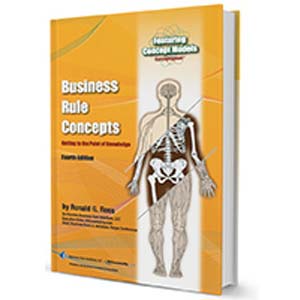Differentiating Standard Processes with Decision Management
Over the last decade, companies and software suppliers have focused on the processes that control business. This has resulted in a "commoditization" of processes that leaves companies using essentially the same process as their competitors. How can companies differentiate themselves, yet still take advantage of the new technologies and approaches in process management?
Let's start by considering why processes are becoming commoditized. The first trend driving this commoditization is the growth in the use of Business Process Management Systems (BPMS). While there are many advantages to BPMS, the growing use of process templates in this context means that there is a real danger that an organization's competitors may use the same process, thus diluting the "value add" from one company to the next. Similarly, as the major application suite vendors focus more on process-centric automation, they too push companies towards a common process design. Lastly, as companies turn to outsourcing, they find that the standard processes required to make an outsourcing contract workable make them look more and more like their competitors.
To resist this commoditization and continue to offer unique services to their customers an organization can build their own processes. This might mean building an application rather than buying an application suite, or buying one but planning for extensive customization. It might mean adopting a BPMS but not the standard templates the vendor offers. It might mean outsourcing no process except those offering zero competitive advantage. All these options limit flexibility and increase costs.
Now processes consist of steps in a defined sequence and decisions — decisions about pricing, decisioning about eligibility, and decisions about which steps might be required or desirable. There are, therefore, two different kinds of differentiation possible: Process Differentiation and Decision Differentiation.
- Process Differentiation means performing the steps in a process in a radically different order, or at a radically different pace, or in a radically different way. Adopting a build-to-order process could fall into this category.
- Decision Differentiation means performing the same basic steps in a process the same way and in a similar order, but choosing which steps apply to which transaction differently or pricing/approving transactions differently.
Decision Differentiation delivers a different feel for customers, different outcomes, and yet uses a standard process. For example, if an organization approves low-income customers more readily than its competitors, it represents decision differentiation even if they both use the same loan paperwork-processing vendor. Decision differentiation uses the transaction and the data about that transaction to drive a different outcome.
In a manual process a company differentiates decisions using policy manuals or by training to explain its unique approach. In an automated process, decision management is required.
Decision management, based on a business rules management system, allows the key decision points (approve/decline, complete/incomplete, treat as a good/average/poor customer) within a process to be automated effectively. Changing the rules in those decision points will differentiate the process, even if the process steps are very standard. This approach delivers real agility as business managers can update and redeploy their rules to the relevant decisions quickly as their market or competitors change. Decision management also allows advanced analytics to be applied to these decision points, allowing predictions and probabilities to influence the decision making also, further differentiating.
To make this work a company must first identify critical decisions and critical processes within its business and determine their interaction. For those situations where process differentiation or both process- and decision-differentiation are critical, the company will need to combine decision management with custom process-centric software. If the decision is critical but the process is standard then decision management can be used to inject differentiated decisions into standard processes or applications. The company can outsource or adopt templates that best support its business while retaining control of its decision making. Regardless of the approach companies are going to want to work with software vendors who think about the decision points in a process and understand that these will require a decision service, not just a work list.
One side advantage of this approach is the company's increased ability to change its mind about outsourcing a process. Control over the decisions in a process will help insulate customers from the impact of a change to outsourcing or a change in outsourcer. If a company is outsourcing a process, it might want to push its outsourcer to automate decisions within the process and expose the rules to the company so that it can customize the process.
The trend towards common processes, whether through software or outsourcing, is not going to slow, as the cost savings from it are real. The judicious use of decision management to automate decision points in these processes can help ensure that common processes do not become commoditized and that customers will always feel like they are dealing with a real company, not faceless automaton.
Don't forget that there is a lot more information on this in previous articles in this column as well as in my book Smart (Enough) Systems. You can also use RSS or e-mail to subscribe to my blog (note new RSS and blog URLs).
# # #
About our Contributor:
Online Interactive Training Series
In response to a great many requests, Business Rule Solutions now offers at-a-distance learning options. No travel, no backlogs, no hassles. Same great instructors, but with schedules, content and pricing designed to meet the special needs of busy professionals.











